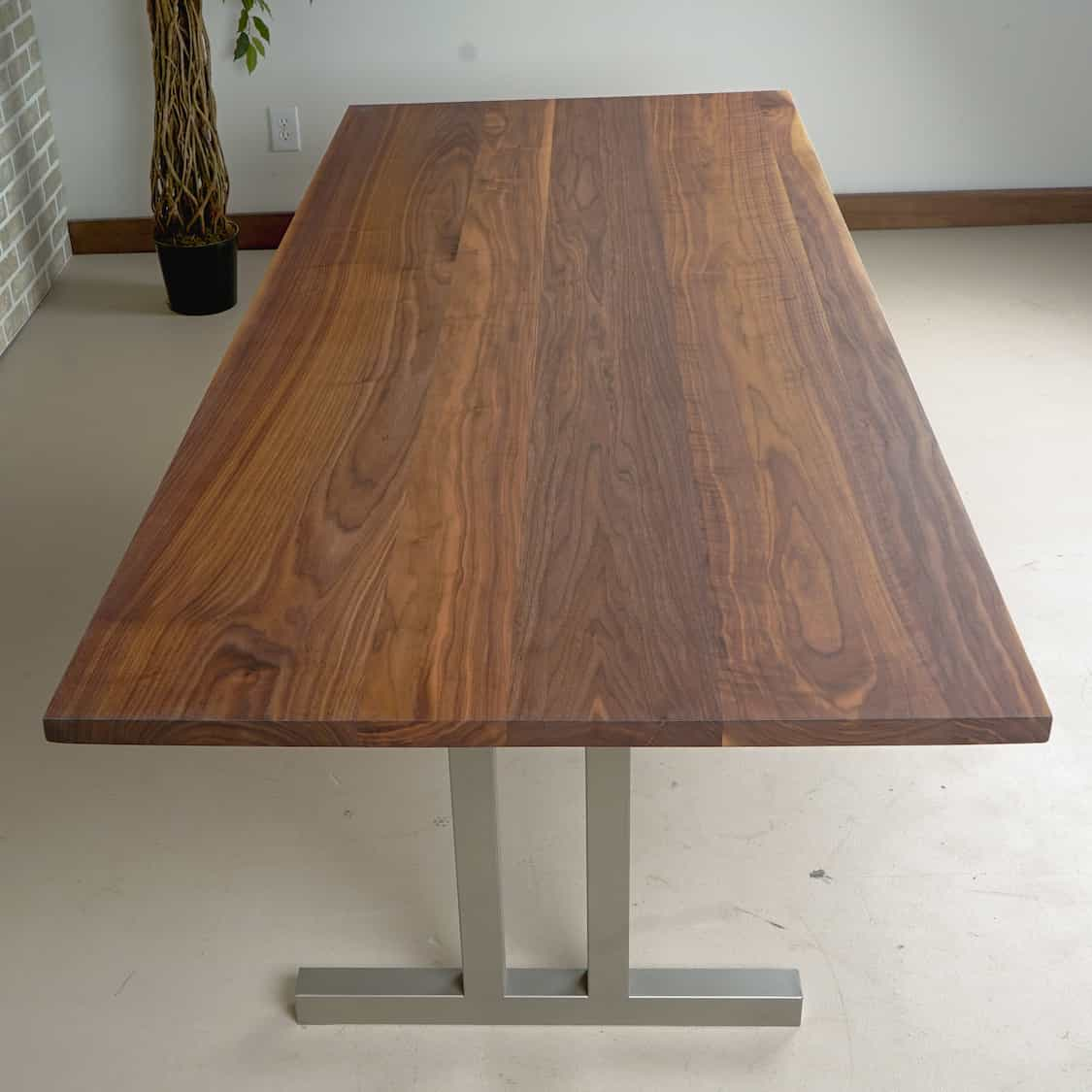Boost Your Dining Room's Visual with Top quality Dining Table Legs Wood
Boost Your Dining Room's Visual with Top quality Dining Table Legs Wood
Blog Article
Secret Aspects to Remember for Dining Table Legs Timber Choices
When picking timber for eating table legs, numerous vital elements call for mindful factor to consider to guarantee both performance and aesthetic appeal. The option of timber type, characterized by its durability and special grain patterns, plays a crucial role in the general layout and durability of the item.
Timber Types and Features
When picking wood for dining table legs, it is vital to recognize the unique qualities of various timber kinds. Different timbers supply unique benefits and disadvantages, influencing both the resilience and aesthetic charm of the completed product.
Oak, known for its outstanding longevity, additionally includes a famous grain that can add character to the table. Cherry timber, with its abundant shade that grows over time, supplies an elegant appearance however might need even more upkeep to stop scratches.
On the various other hand, softwoods like want and fir are more budget-friendly and simpler to function with, yet they are less sturdy than hardwoods. Pine is light-weight and features a cozy, rustic look, making it a preferred choice for laid-back eating settings. Nonetheless, it is much more susceptible to dents and scrapes.
Understanding these attributes will certainly assist in making an educated choice to guarantee the legs of the eating table meet both aesthetic and useful needs.
Grain Patterns and Aesthetic Appeal
The wood's grain is not merely an aesthetic characteristic; it imparts an one-of-a-kind personality and charm to each item. Various timber varieties show distinctive grain patterns, varying from the straight lines of maple to the complex swirls of oak and the striking number of walnut.
Additionally, the alignment and range of the grain can influence the viewed size and beauty of the table. For instance, larger, extra obvious grains might lend a bold, dramatic impact, while finer, subtler grains can produce a fine-tuned, downplayed look. Additionally, the completing process can further boost these patterns, highlighting the natural beauty of the timber and drawing out rich tones.
Inevitably, the selection of grain pattern need to integrate with various other layout components, such as the table top and surrounding furnishings, making certain a cohesive aesthetic that elevates the dining experience. Thoughtful selection of timber grain not only adds to the table's beauty yet likewise reflects the owner's preference and design.
Longevity and Strength
The durability and stamina of dining table legs are paramount considerations for guaranteeing long life and security in any kind of eating space. Selecting the ideal timber is crucial, as various species exhibit varying degrees of strength.

Inevitably, buying high-grade timber and durable building and construction approaches will generate a table that stands the examination of time, while providing a reputable foundation for numerous meals shared among friends and family. Prioritizing durability and strength makes certain that your table stays practical and aesthetically pleasing for years ahead.
Upkeep and Care
Proper upkeep and treatment are important for preserving the durability and toughness of dining table legs made from wood. Normal cleaning is important; using a soft, damp towel makes sure that dust and particles do not gather, which can lead to scrapes and dullness. It is advisable to prevent severe chemicals or rough products that could harm the finish.
Furthermore, applying a suitable wood polish or wax occasionally can assist maintain the shine and protect the timber from wetness and spills. It is important to follow the maker's recommendations relating to the type of product to make use of, as particular finishes may react negatively to certain chemicals.
Humidity this page and temperature variations can also influence wooden table legs, triggering them to warp or fracture. It's ideal to put the table far from straight sunshine and heat resources. If the table legs have any damages or scratches, dealing with these promptly can protect against additional damages.
Last but not least, periodically examining the joints and screws for you can look here tightness is necessary to preserve structural honesty (Dining Table Legs Wood). By adhering to these maintenance practices, house owners can ensure their wood table legs continue to be useful and attractive for several years to find
Environmental Factors To Consider
When selecting timber for dining table legs, it's necessary to take ecological factors to consider into account. The sourcing and sustainability of wood are critical in reducing eco-friendly impact. Choosing for timber from qualified sources, such as those backed by the Forest Stewardship Council (FSC), guarantees that the hardwood is collected properly, promoting woodland preservation and biodiversity.

Furthermore, regional sourcing of wood lowers transport exhausts, supporting web regional economic situations while minimizing environmental effect. It is likewise suggested to be conscious of the wood's treatment and completing procedures, as specific chemicals can be dangerous to both human health and wellness and the setting. By prioritizing sustainable wood options, customers can add to environmental preservation while enjoying the durability and appeal of their eating table legs.
Final Thought
In final thought, selecting wood for eating table legs requires mindful consideration of different factors, consisting of timber types, grain patterns, and durability. Maintenance needs and environmental sustainability additional impact wood options, stressing the significance of sourcing from accredited or redeemed materials.
When choosing timber for dining table legs, a number of critical aspects call for careful consideration to make certain both functionality and aesthetic charm.Correct maintenance and care are essential for protecting the toughness and stamina of eating table legs made from timber.When selecting wood for dining table legs, it's vital to take environmental considerations right into account. By focusing on lasting timber choices, consumers can contribute to environmental conservation while appreciating the resilience and charm of their eating table legs.
In final thought, picking timber for eating table legs demands mindful factor to consider of numerous factors, including timber kinds, grain patterns, and longevity. Dining Table Legs Wood.
Report this page